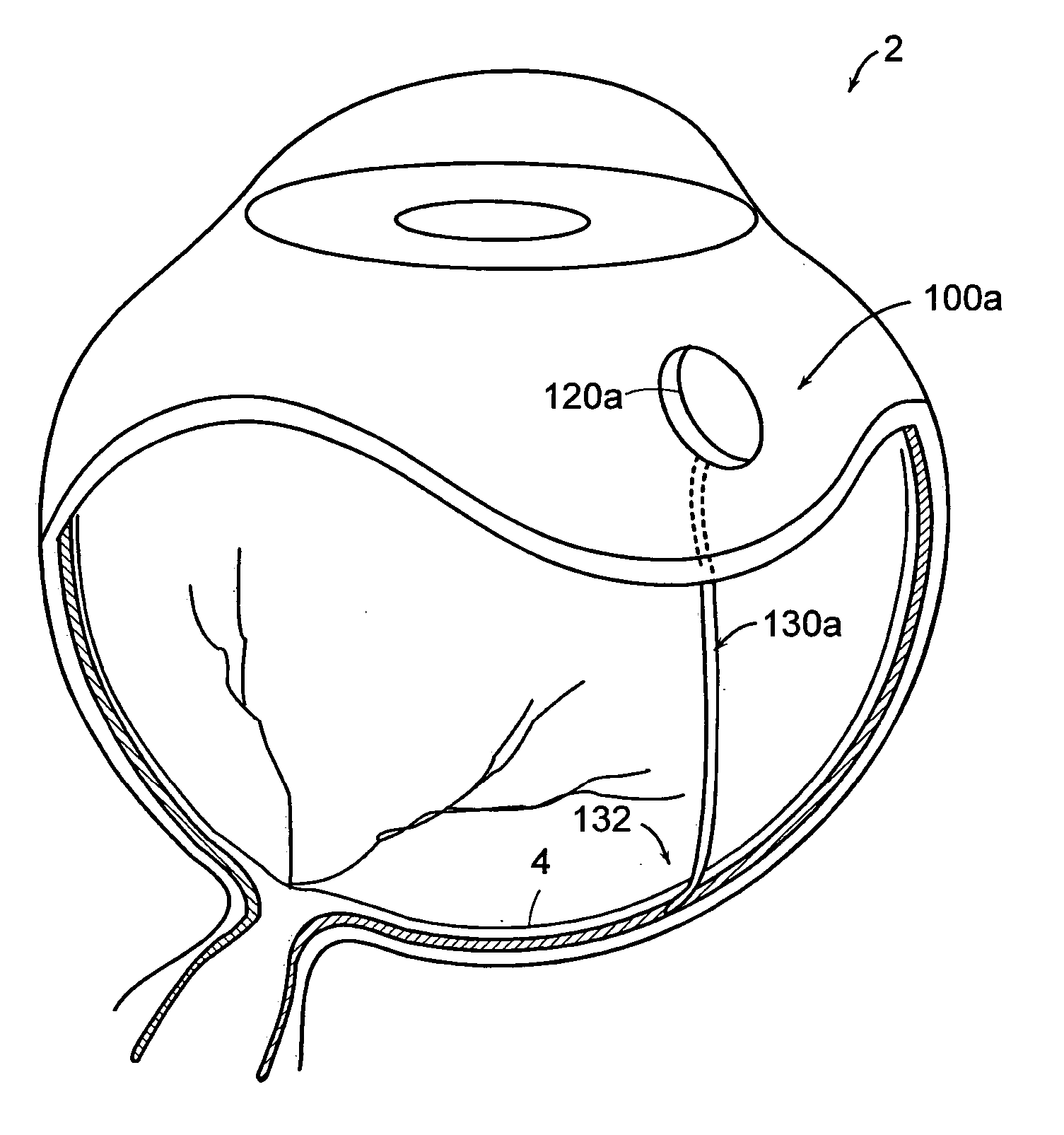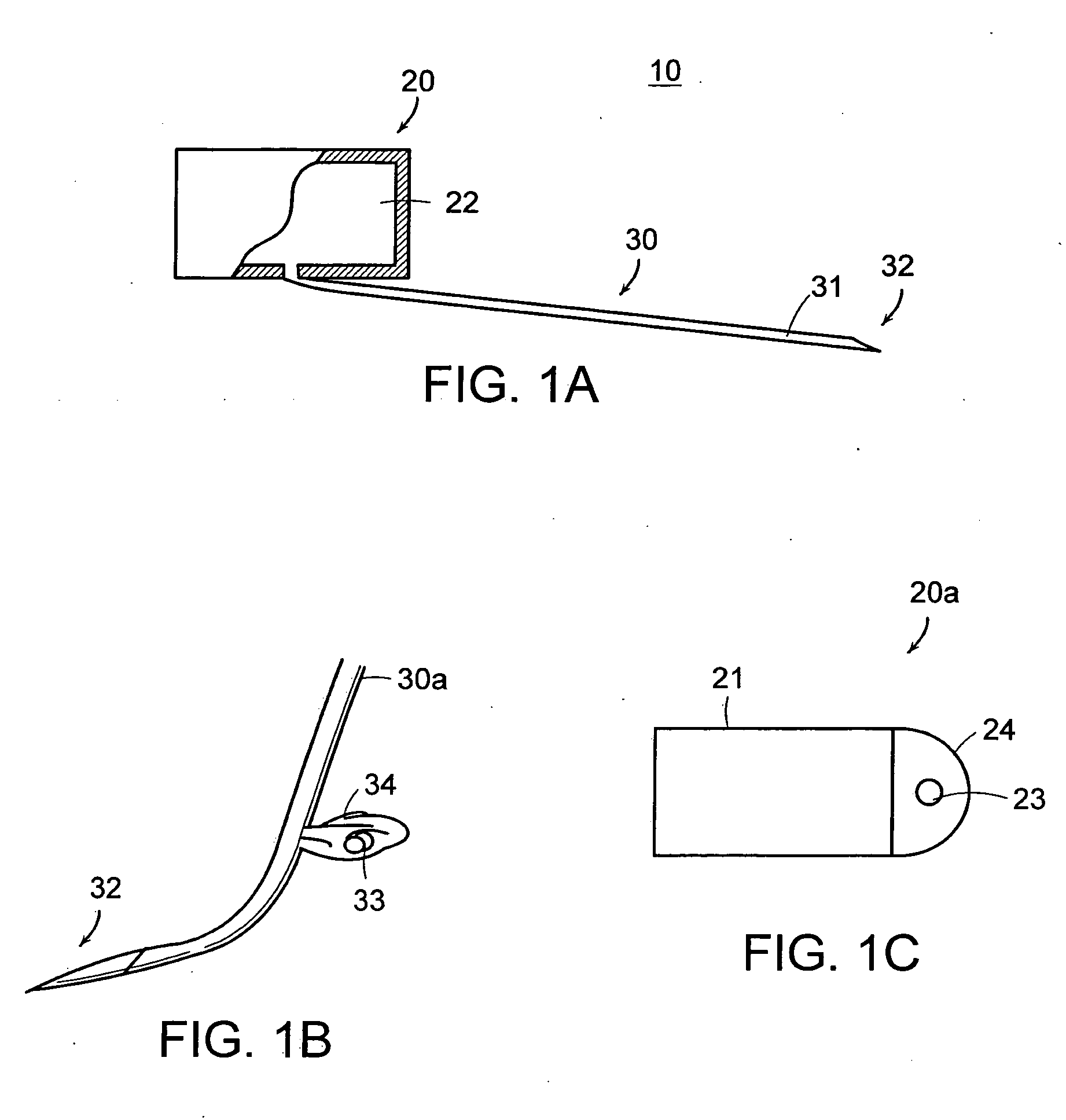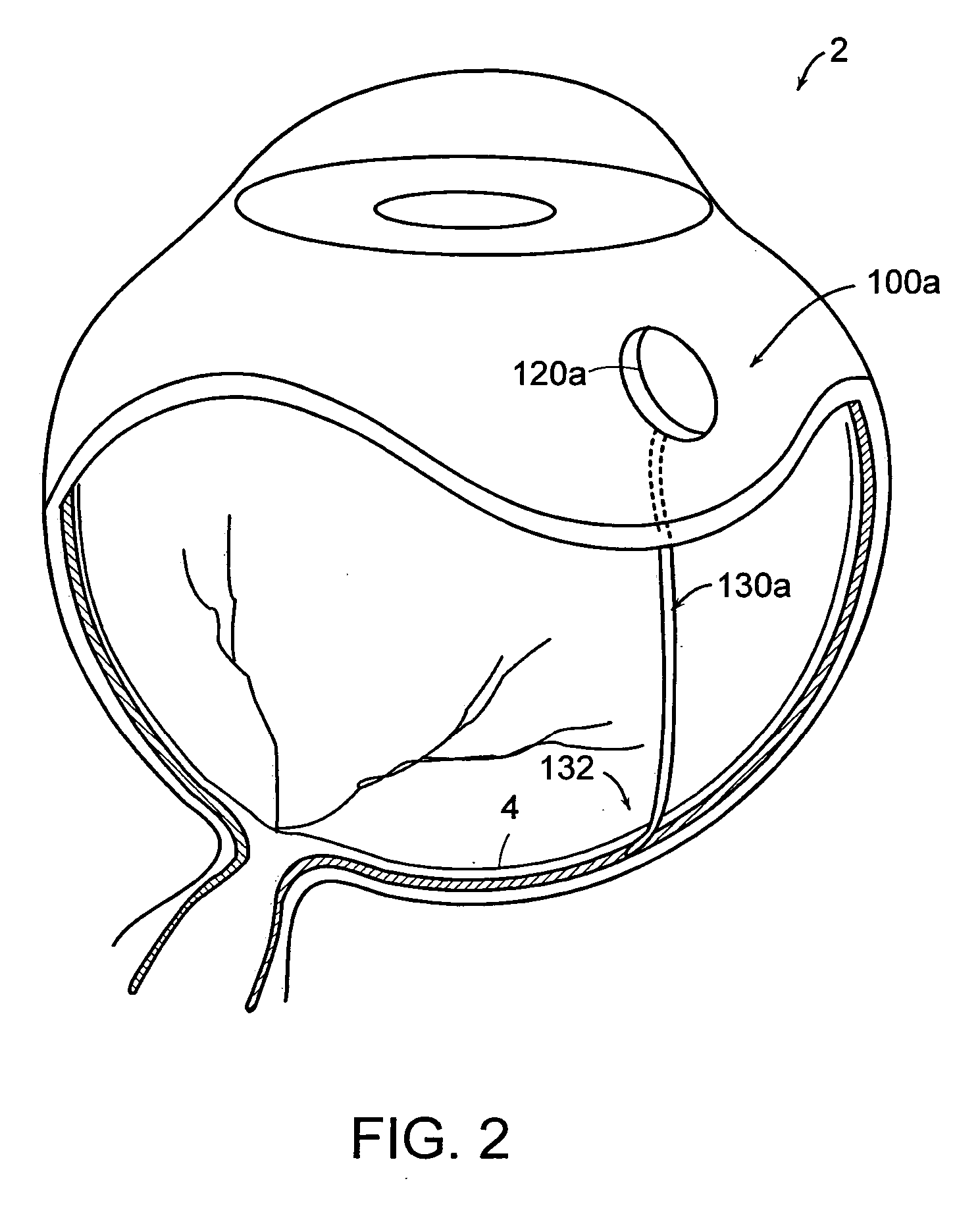Reservoirs with subretinal cannula for subretinal drug delivery
a cannula and subretinal technology, applied in the field of eye treatment, can solve the problems of not being able to effectively treat, not being able to provide specific therapy, and only being useful in about 20 percent of neovascular amd cases, so as to prevent the progression of the condition
- Summary
- Abstract
- Description
- Claims
- Application Information
AI Technical Summary
Benefits of technology
Problems solved by technology
Method used
Image
Examples
Embodiment Construction
[0059] Referring now to the various figures of the drawing wherein like reference characters refer to like parts, there is shown in FIG. 1A a simplified block diagram or schematic view of a therapeutic medium delivery device 10 according to the present invention. As shown in FIG. 1A, the therapeutic medium delivery device 10 includes a main body 20 and a outlet member or cannula 30 that is fluidly coupled to the interior volume 22 or compartment of the main body. The cannula 30 also is arranged so as to extend outwardly from the main body and from any one of the bottom, side or top surfaces of the main body.
[0060] The main body 20, more specifically the main body interior volume, is sized so as to contain a desired amount of the therapeutic medium to be dispensed or instilled subretinally in the eye 2. In the case where the therapeutic delivery device 10 is disposed within the eye 2, the main body 20 also is preferably sized so as to not cause an appreciable impact on the vision of...
PUM
 Login to View More
Login to View More Abstract
Description
Claims
Application Information
 Login to View More
Login to View More - R&D
- Intellectual Property
- Life Sciences
- Materials
- Tech Scout
- Unparalleled Data Quality
- Higher Quality Content
- 60% Fewer Hallucinations
Browse by: Latest US Patents, China's latest patents, Technical Efficacy Thesaurus, Application Domain, Technology Topic, Popular Technical Reports.
© 2025 PatSnap. All rights reserved.Legal|Privacy policy|Modern Slavery Act Transparency Statement|Sitemap|About US| Contact US: help@patsnap.com



